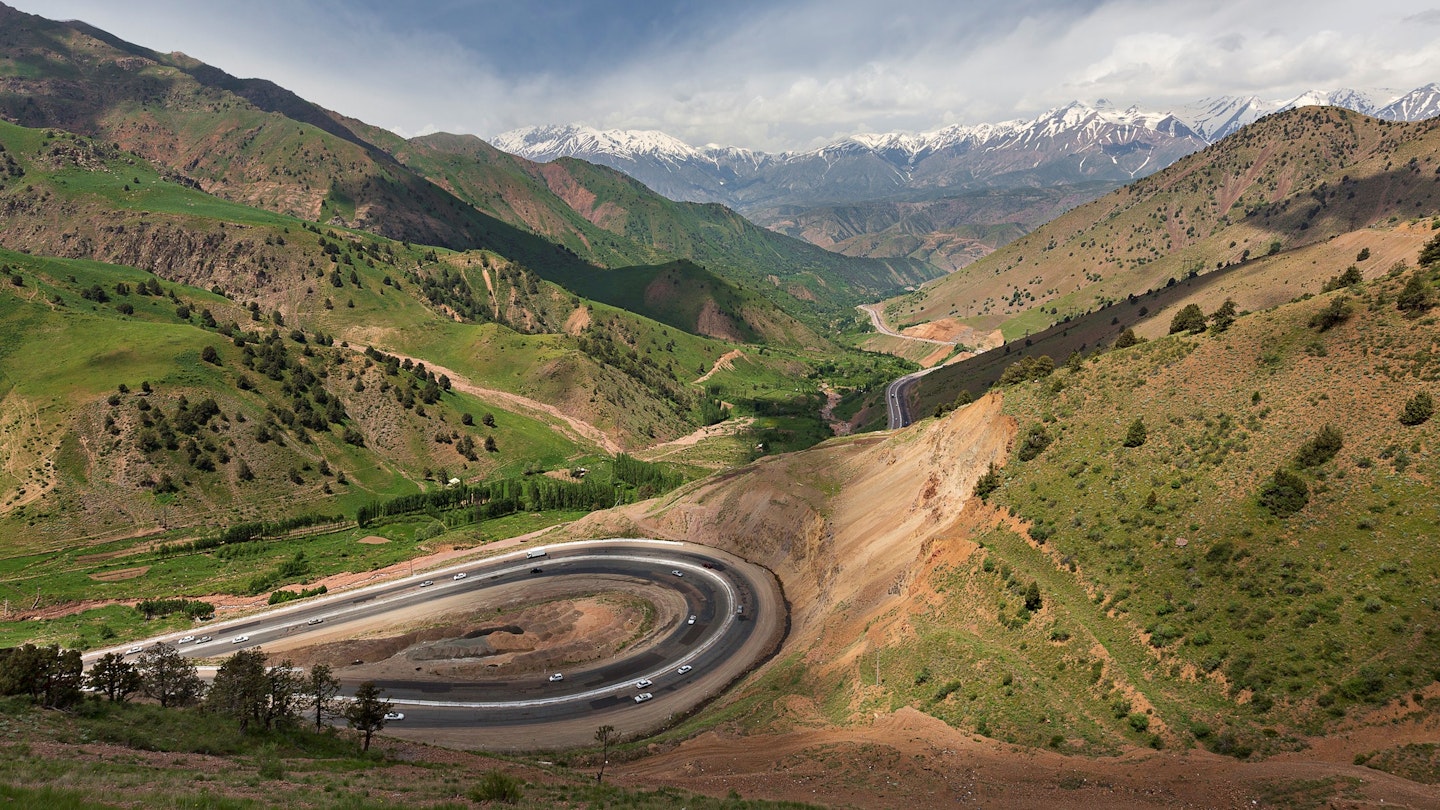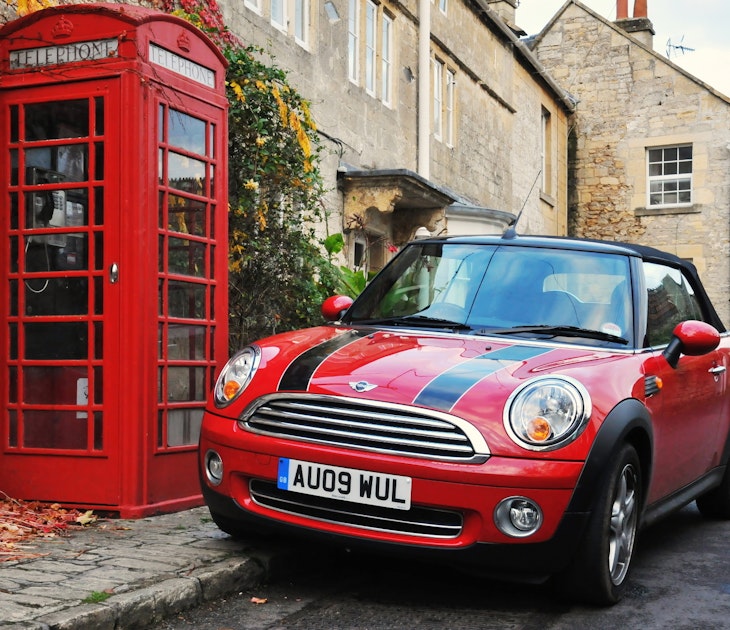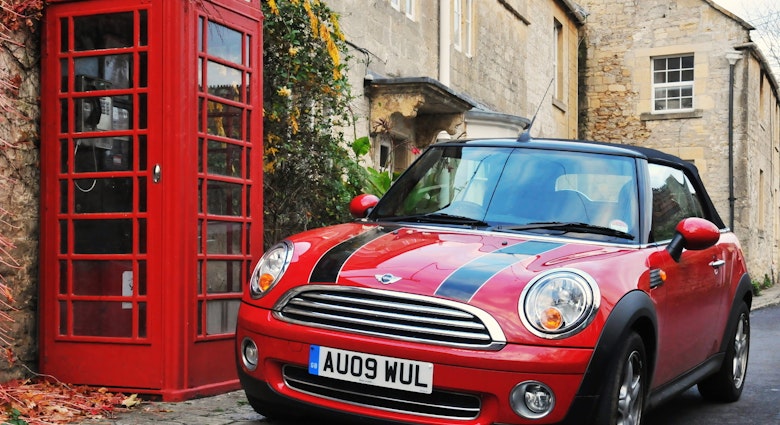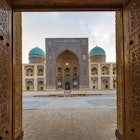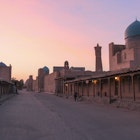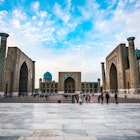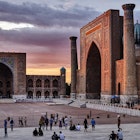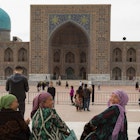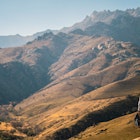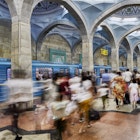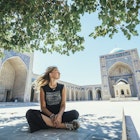For at least two millennia, Uzbekistan has been the setting for some of Asia’s most important road trips, following the network of Silk Roads that once formed the major highway between east and west.
Today the roads to Samarkand may be made of tarmac not gold, but there are still some superbly evocative and scenic road trips to be had in Uzbekistan, through the heart of Central Asia.
Getting around Uzbekistan is easy. Trains and shared taxis will get you to every corner of the country, but to roam off the beaten track and explore lesser-visited historical sites, nothing beats the freedom of hiring a taxi or a car with a driver for a day. For a road trip to remember, it's even possible to rent your own car and drive yourself along the Silk Road. Here are the top routes to consider.

1. Silk Road highlights: Samarkand to Bukhara
Best road trip for Silk Road dreamers
Samarkand–Bukhara; 270km (168 miles); allow one day
If you’ve ever fancied road-tripping along the Silk Road, this is the itinerary for you. The roads are in good repair and there are plenty of off-the-beaten-track historical and architectural detours to explore en route, as you travel between Central Asia’s two most storied Silk Road cities.
After spending a couple of days ogling the architectural glories of Samarkand, drive northwest out of the city, stopping to join pilgrims at the Imam Al-Bukhari Mausoleum, then continue along the M37 highway through the oasis-like Zeravshan Valley. Get your first Silk Road fix with a stop at the roadside Rabat-i-Malik Caravanserai, once an overnight stop for trade caravans, today just past Navoi airport.
At Gijduvan, an hour or so before Bukhara, stop off to see the 15th-century Ulug Beg Madrassah and the nearby pottery workshop of ceramics master Abdullo Narzullaev. About 15km (9 miles) further down the road, detour 1km (0.6 miles) off the highway to admire the towering 39m-tall (128ft) Vabkent Minaret, dating back to 1196. You’ll almost certainly have all these unsung Silk Road sights to yourself, before you rejoin the tourist circuit at handsome, historic Bukhara – Central Asia’s holiest city.
Planning tip: An excellent alternative return route from Bukhara back to Samarkand will take you via the ancient Hepthalite city of Erkurgan – the highway runs straight through the ruined city walls – to the historic city of Qarshi, with its medieval madrassas, mosques and epic WWII Soviet-era War Memorial.

2. Surkhandarya road trip
Best road trip for getting off the beaten track
Samarkand–Termez; 380km (236 miles); allow two days
From Samarkand, it’s an exciting, zigzagging drive up and over the Kitob (Takhta-Karacha) Pass to eventually reach Shakhrisabz, the home town of 14th-century empire-builder Timur (Tamerlane). Highlights here include the epic towers and blue tiles of Tamerlane's ruined Ak-Saray Palace, the tomb of Tamerlane's eldest son Jehangir, and the blue-domed Kok Gumbaz Mosque built by Tamerlane's grandson Ulug Beg. Shakhrisabsz makes for a great day or overnight trip, even if you don’t continue any further south.
To really get off the beaten track, continue southeast along the M39 highway into Surkhandarya province, pausing for an overnight in remote Baisun. En route you’ll pass near the Iron Gates, the historic dividing line between the ancient kingdoms of Sogdia and Bactria.
Swapping mountains for plains, you’ll arrive in Termez on the banks of the Amu Darya (Oxus) River, bordering Afghanistan. The Buddhist stupa and monastery of Fayoz Tepe and the archaeological site of Kampyr Tepe point to the area’s ancient past, while the Mausoleum of Al Hakim al-Termezi and the ruins of the Kyrk Kyz fortress date from the medieval Islamic era.
Planning tip: Be careful not to drive close to the unstable Afghanistan border; hiring a car and driver is a good idea for this border region trip.
3. The Fergana Valley
Best road trip for traditional Uzbek culture
Tashkent–Tashkent; 700km (435 miles); allow three to four days
A road trip into the broad Fergana Valley takes you into the heartland of traditional Uzbek culture, through a landscape dotted with sleepy kishlaks (traditional villages), calligraphy-encrusted mosques, charming teahouses and traditional bazaars. Hire a car and driver for a one-way trip, or rent your own car and return via the same route.
Start off from Tashkent by following the A373 to Kokand, via Angren, then take the road tunnel under the Qamchiq (Kamchik) Pass and head across the Chatkal range to enter the wide Fergana Valley. Kokand was one of Central Asia’s great khanates in the 19th century and you can still visit the palace of Khudayar, the last of Kokand’s khans.
From Kokand, drive to Russian-influenced Fergana city, via the Uzbek ceramics center of Rishton. Use Fergana as a base for a trip to nearby Margilon, to see the interesting silk factory and its stunning range of atlas tie-dye silks. Don’t miss the epic Kumtepa Bazaar here on a Sunday or Thursday.
From Fergana, head north to the conservative city of Namangan via the archaeological remains of 2000-year old Aksikent, at the heart of the valley. To spice things up on the way back to Tashkent, plot a route via the traditional pichok (knife) workshops of Chust.

4. Khiva to Nukus via the desert forts of Karakalpakstan
Best road trip for amateur archaeologists
Khiva–Nukus; 240km (150 miles); allow two days
Hidden in the Kyzyl Kum desert, northeast of the Amu Darya (Oxus) river in northwestern Uzbekistan, are a dozen or more ruined forts, or qala, that date back over a millennium. You can link half a dozen of the most interesting sites in a long day drive from the historic city of Khiva, but an overnight trip to Nukus allows for more leisurely exploration.
Unmissable sites include the former Khorezmian capital of Topraq Qala and the three forts (and yurt camp) at Ayaz-Qala, but there are plenty of other ruins to track down. From here, continue on to Nukus, with a stop at the ancient Zoroastrian dakhma (Tower of Silence) of Chilpak Qala – a reminder of ancient Persian influences.
The city of Nukus is the capital of Karakalpakstan (Qaraqalpaqstan), a Russian Doll-style autonomous "stan-within-a-stan" inside Uzbekistan. The standout experience here is a visit to the Savitsky Museum, home to one of the world’s finest collections of avant-garde Soviet art.
Planning tip: The qalas of Karakalpakstan are not well signposted, settlements are few and far between and the roads are faint and sandy, so it’s a good idea to go with a driver or guide who knows the region.

5. An expedition to the Aral Sea
Best road trip for explorers
Nukus–Nukus; 600km (250 miles); allow two days
One of Central Asia’s most exciting overland adventures is the 4WD trip across the remote Ustyurt Plateau to view the ever-receding shores of the dying Aral Sea, once the world’s fourth-largest body of freshwater. This expedition will take you from Nukus to Moynaq, a former Aral Sea fishing port, now most famous for its line of beached fishing trawlers – the so-called "ship graveyard" – left high and dry, nearly 100km (62 miles) from the nearest water.
From Moynaq, Mad Max-style dirt tracks traverse sections of exposed, salt-encrusted seabed to climb up into the canyons of the Ustyurt Plateau, before descending to an overnight stop in a Kazakh-style yurt camp. Pause when you finally reach the thin blue line of the shallow and salty sea and ponder the folly of the Soviet-era irrigation projects that drained this natural wonder.
Planning tip: Guides, drivers and overnight stays in the yurt camp need to be arranged in advance, so start contacting agencies and looking for fellow travelers to share costs a couple of weeks beforehand.
Tips for driving in Uzbekistan
The main highways are generally in decent condition, but hidden clusters of car-eating potholes can appear without warning at any moment. Checkpoints are frequent in Uzbekistan, but are generally routine.
Liquid natural gas is the main fuel in Uzbekistan, followed by petrol. Diesel is hard to come by, especially in western Uzbekistan and during the cotton harvest in September. In rural areas you may have to buy plastic bottles of fuel from private roadside sellers so bring a filter, as the fuel is often low grade.
Car hire companies include RentCar.uz and the international company Sixt, which has offices in Tashkent and Samarkand. You’ll likely need to leave a large cash deposit. International driving licenses are not normally required.
Speed limits are generally 100km/h (60mph) on intercity roads or 50km/h (30mph) inside towns. Be warned that in Uzbekistan the driver entering a roundabout has the right of way, which is the opposite of most countries.

